After entering Gatun lake - the body of water behind the Gatun locks - passengers who had booked Panama shore excursions were able to leave the ship via tenders. After about half the total number of guests had left, the ship turned around, exited the Canal through the Gatun Locks again and docked in Colon, ready to pick up the guests several hours later!
I managed to take part in three shore excursions in Panama: a tour of Panama City, a trip to the Miraflores Lock Observation Centre and Panama train journey and finally, the very exciting visit to a native Indian village.
During our visit to Panama City, on the Pacific side of Panama (it only takes about an hour to travel between the oceans via bus), we saw the ruins of the old city, the colonial section and of course, the modern skyscrapers.

Above: A view of the skyscrapers from a bridge.
Panama was founded on August 15, 1519 by Spanish conquistador Pedro Arias Dávila. The city was the starting point of expeditions that conquered the Inca Empire in Peru (1532). The city was destroyed by a devastating fire, when the pirate Henry Morgan sacked it on January 28, 1671. It was rebuilt and formally established on January 21, 1673 in a peninsula located 8 km from the original settlement. The place where the previously devastated city was located is still in ruins, and has become a tourist attraction known as "Panama Viejo".
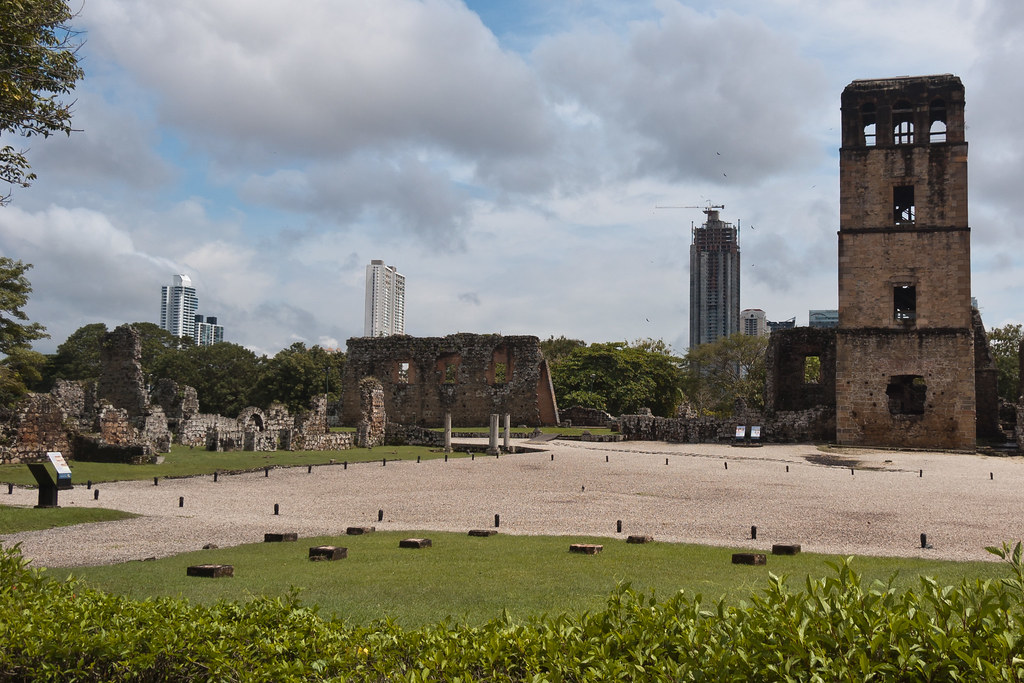
Above: Ruins of the old city - Panama Viejo.
Panama's old quarter features many architectural styles, from Spanish colonial buildings to French and Antillean townhouses built during the construction of the Panama Canal.

Above: Colonial architecture in the old quarter of Panama.
Built and settled in 1671, after the destruction of Panama Viejo the historic district of Panama City (known as "Casco Viejo", "Casco Antiguo" or "San Felipe") was conceived as a walled city to protect its settlers against future pirate attacks.

Above: A woman selling famous fabric designs in the old quarter.
The more modern areas of the city have many high-rise buildings, which together form a very dense skyline. There are currently more than 110 high-rise projects being constructed, with 127 high-rise buildings already built. Some of the skyscrapers have very intriguing designs!
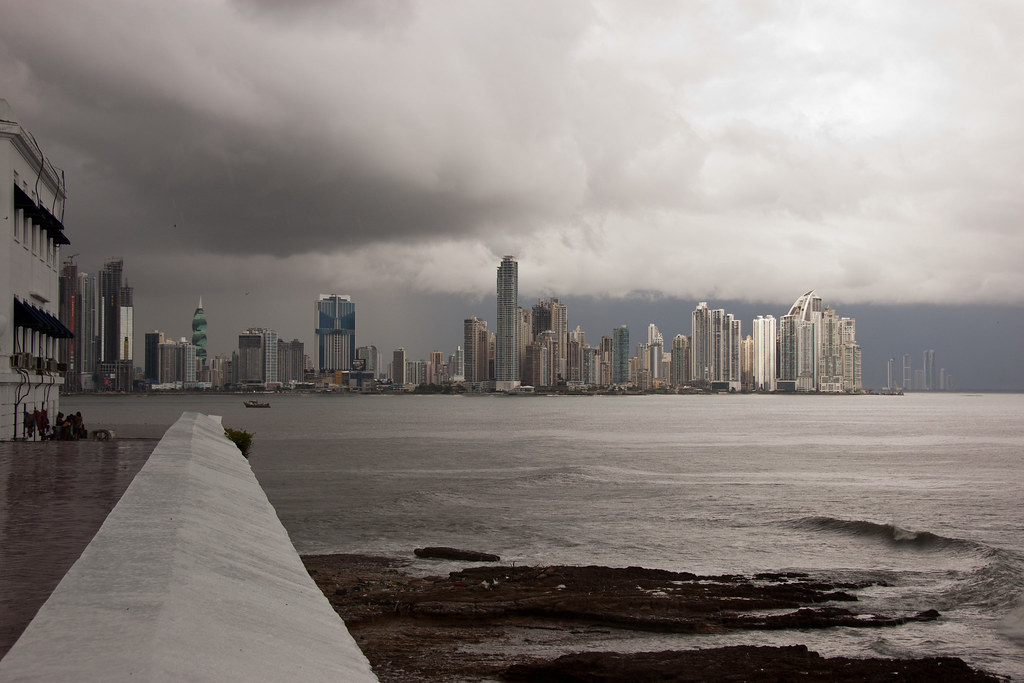
Above: The skyline of Panama City, as seen from the old quarter.
Poverty and wealth sit side by side in Panama City. The authorities have offered lots of money to the slum dwellers to get them to make way for new construction, but the locals - many of whom are fisherman - do not want to leave their homes and livelihood.

Above: Slums and sky-scrapers.
The government building that oversees the running of the Panama Canal, is located in the American quarters of the city which was an area run by the USA during the construction and ownership of the Canal by the Americans.
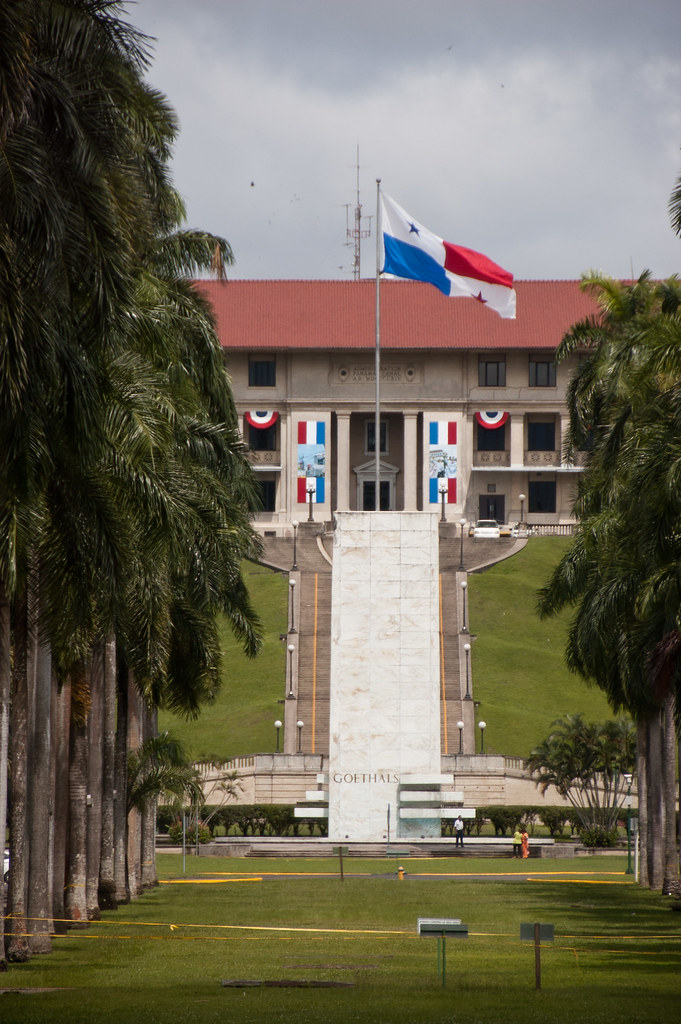
Above: Panama Canal HQ. The boulevard with trees in the front of the shot, is the exact same dimensions as the locks in the Canal.
The second trip, I went on visited the Miraflores Lock Observation Centre which overlooks ships passing through the locks, and has many exhibits.
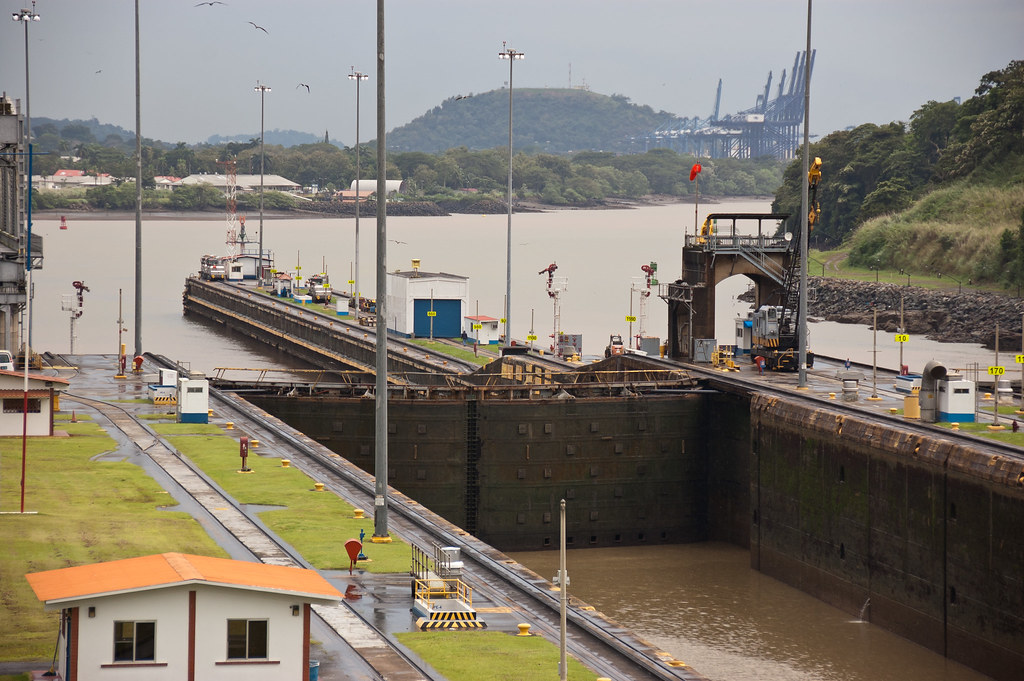
Above: The view from the Miraflores Lock Observation Centre.
After visiting the centre, we took a train along the Panama Railway, back to the Atlantic side of the country. The railway was built before the Canal's construction and is still used to transport goods, as it runs alongside the Canal.

Above: Our Panama Train!
During my trips in Panama, we also caught glimpses of the new locks construction. To read more about this, see my previous Panama Canal post here.

Above: New locks being constructed.
This city where the Zuiderdam docked in Panama, after exiting the Canal was called Colon. It is the second largest duty-free zone in the world but the city itself is not particularly pleasant.
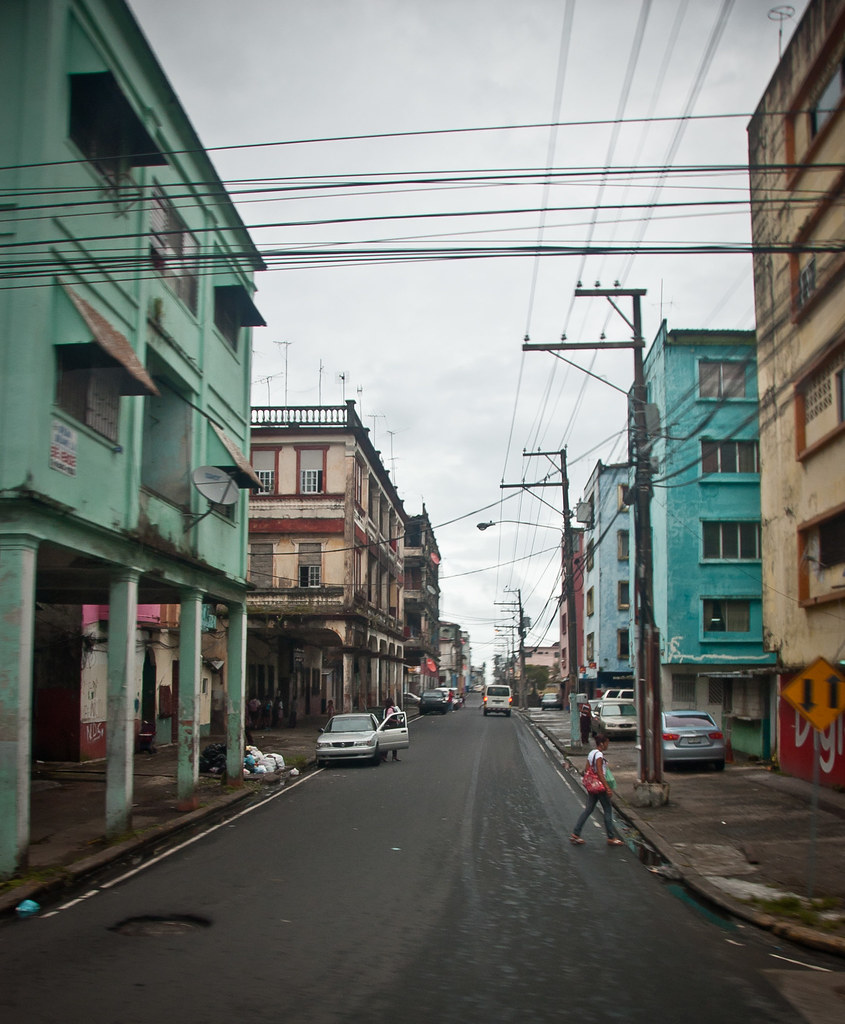
Above: A street in Colon. Please excuse the picture quality - photos from behind a darkened bus window do not come out very well!
Finally, we come to my favourite shore excursion from my time on the Zuiderdam - the authentic Embera Indian Village. Watching my YouTube video below will give you some more information about this trip and the people who we visited. I won't repeat the same text here, so watch the video and enjoy the pictures below!
WARNING: Some of these pictures contain cultural nudity.
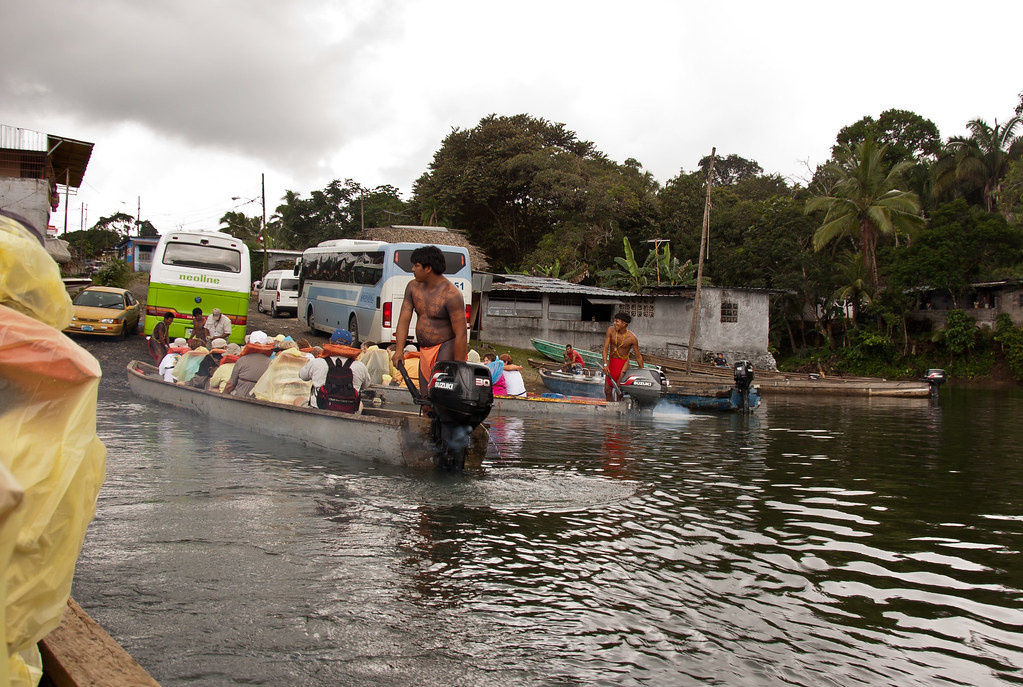
Above: Leaving modern civilisation behind, departing on our (admittedly motorized) canoes.
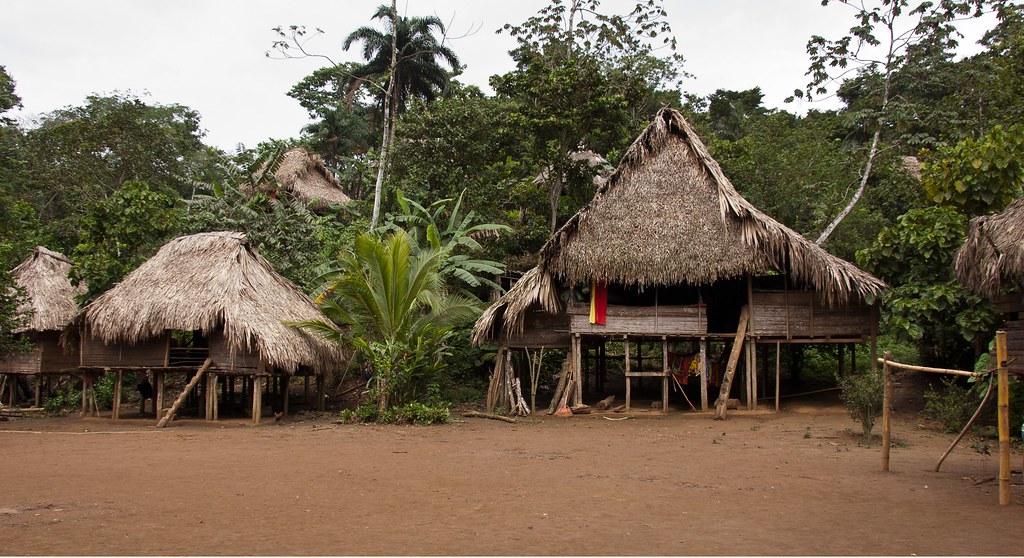
Above: A shot of the village 'square'
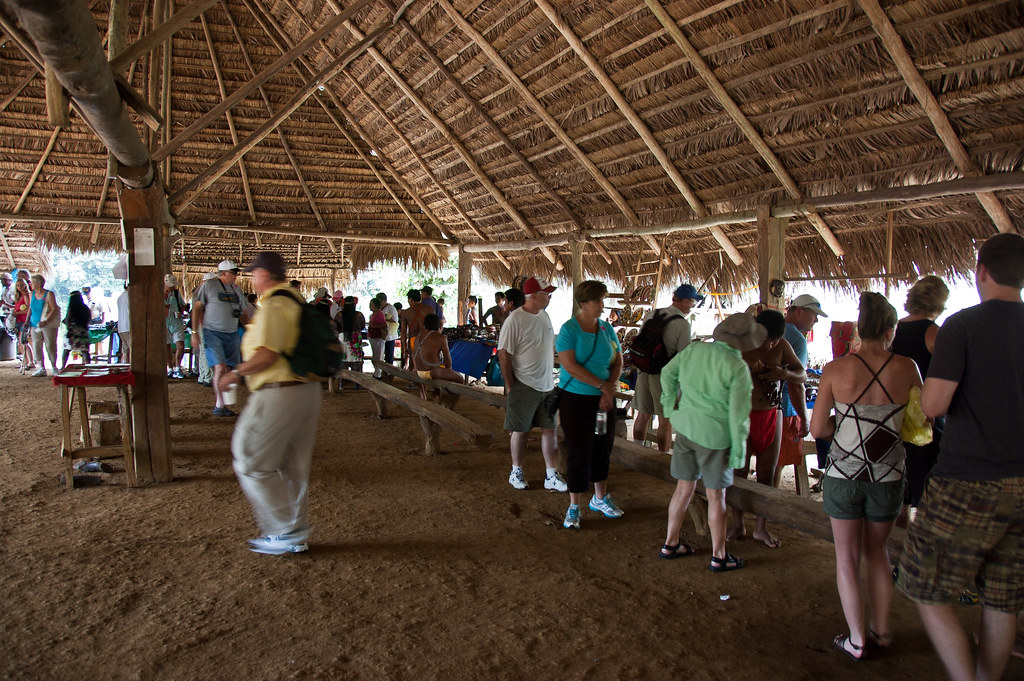
Above: Guests under the main 'marquee' in the village.
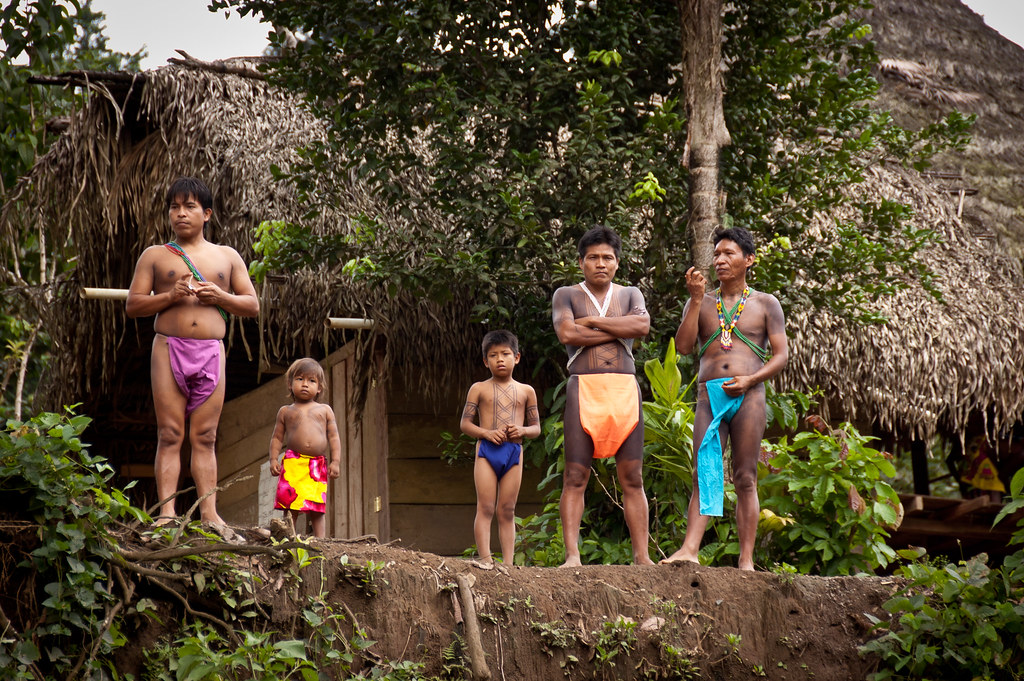
Above: Some of the men waiting to greet us on arrival.

Above: A dwelling deep in the jungle.

Above: Guests were invited to join in with the dancing.
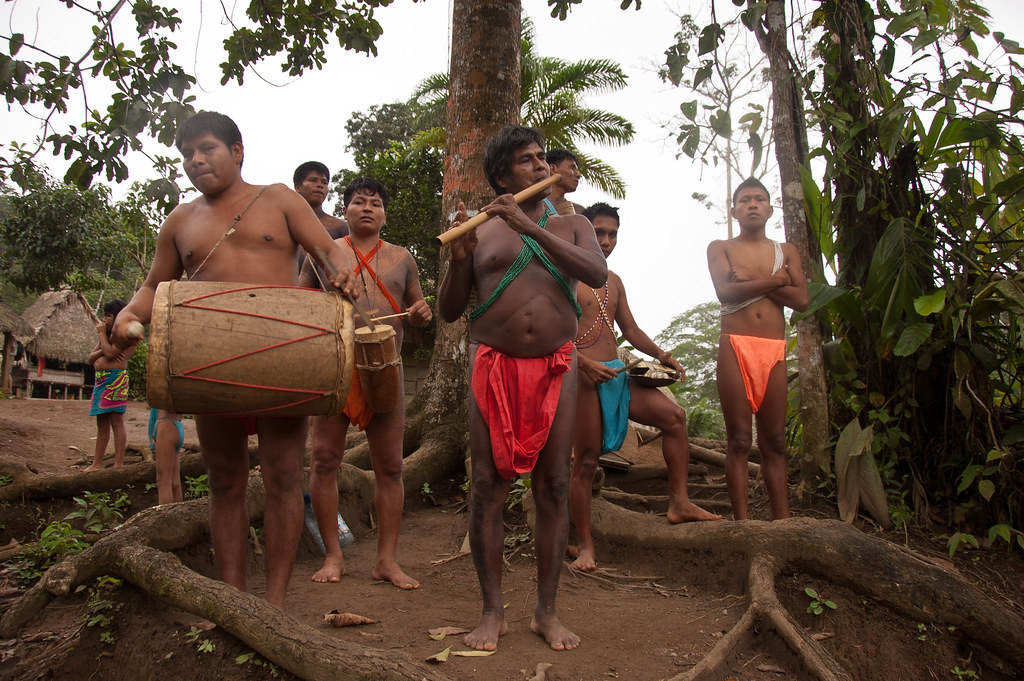
Above: The band welcoming and bidding us farewell at the end of the trip.
This was an amazing trip and I would recommend it if you ever happen to be in Panama!
Thanks so much for reading this blog - I really hope it gives you a glimpse into my adventures. I fly back to Miami this Thursday for the start of my eastern Caribbean cruise which will include trips to the Bahamas and many of the other tiny islands. Rest assured, I'll be blogging about them!

Peter, this was a fascinating read! We are going to the Panama Canal for the second time on the Zuiderdam in January 2014 and doing this excursion. It looks really interesting. Your video and photos are just great.
ReplyDelete